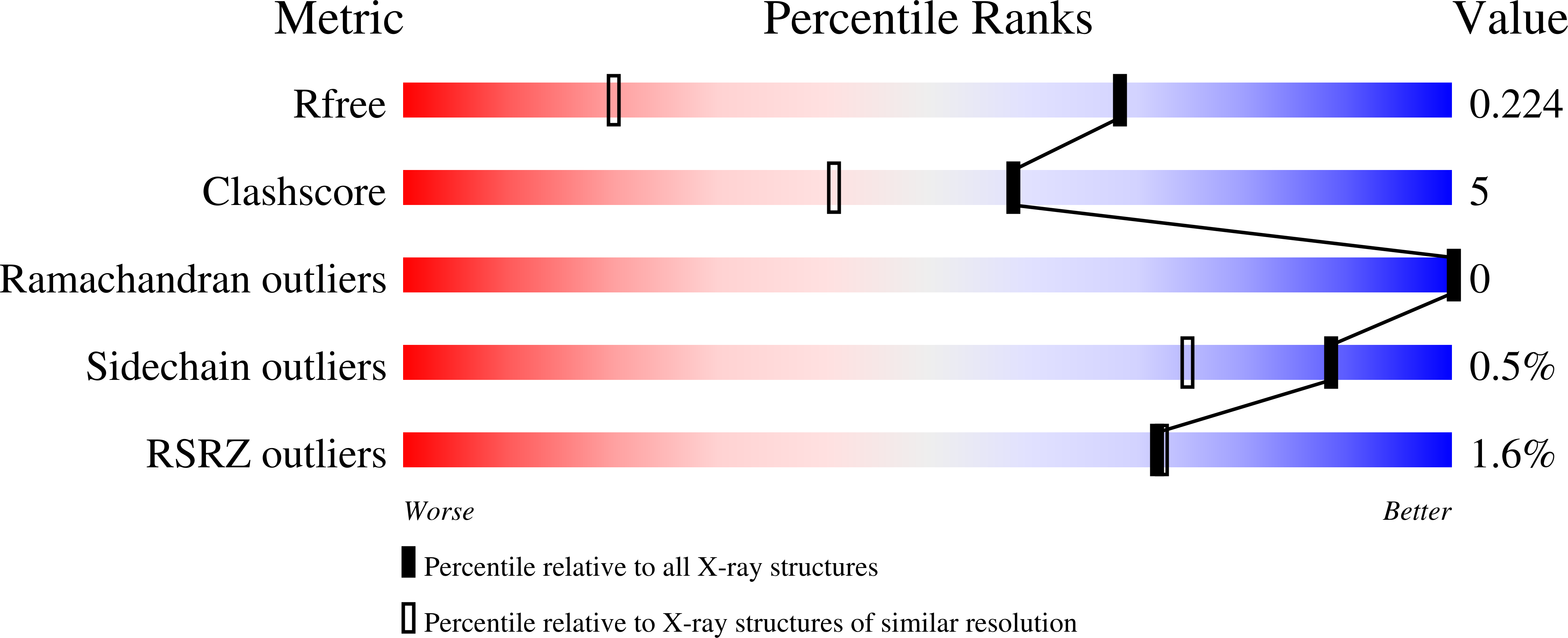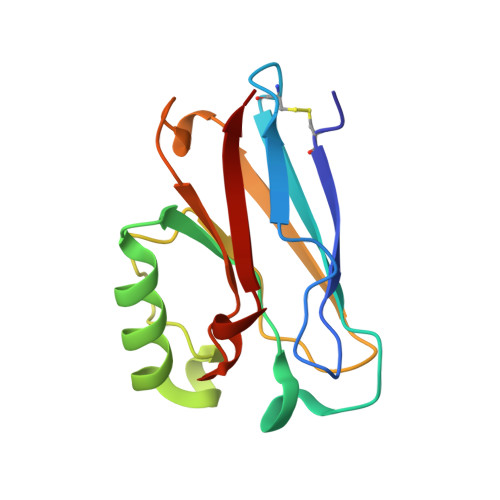The Impact of Second Coordination Sphere Methionine-Aromatic Interactions in Copper Proteins.
Fedoretz-Maxwell, B.P., Shin, C.H., MacNeil, G.A., Worrall, L.J., Park, R., Strynadka, N.C.J., Walsby, C.J., Warren, J.J.(2022) Inorg Chem 61: 5563-5571
- PubMed: 35347989
- DOI: https://doi.org/10.1021/acs.inorgchem.2c00030
- Primary Citation of Related Structures:
7TC5, 7TC6 - PubMed Abstract:
The interplay between the primary and secondary coordination spheres in biological metal sites plays an essential role in controlling their properties. Some of the clearest examples of this are from copper sites in blue and purple copper proteins. Many such proteins contain methionine (Met) in the primary coordination sphere as a weakly bound ligand to Cu. While the effects of replacing the coordinated Met are understood, less so is the importance of its second-sphere interactions. In this combined informatics and experimental study, we first present a bioinformatics investigation of the second-sphere environments in biological Met-Cu motifs. The most common interaction is between the Met-CH 3 and the π-face of a phenylalanine (Phe) (81% of surveyed structures), tyrosine (Tyr) (11%), and tryptophan (Trp) (8%). In most cases, the Met-CH 3 also forms a contact with a π-face of one of a Cu-ligating histidine-imidazole. Such interactions are widely distributed in different Cu proteins. Second, to explore the impact of the second-sphere interactions of Met, a series of artificial Pseudomonas aeruginosa azurin proteins were produced where the native Phe15 was replaced with Tyr or Trp. The proteins were characterized using optical and magnetic resonance spectroscopies, X-ray diffraction, electrochemistry, and an investigation of the time-resolved electron-transfer kinetics of photosensitizer-modified proteins. The influence of the Cu-Met-Aro interaction on azurin's physical properties is subtle, and the hallmarks of the azurin blue copper site are maintained. In the Phe15Trp variant, the mutation to Phe15 induces changes in Cu properties that are comparable to replacement of the weak Met ligand. The broader impacts of these widely distributed interactions are discussed.
Organizational Affiliation:
Department of Chemistry, Simon Fraser University, 8888 University Drive, Burnaby, British Columbia V5A 1S6, Canada.

















